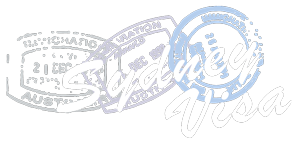
Why Study in Australia?
1. Australia is the 3rd most popular student destination in the world.
As a small country of only 27.2 million people, we pride ourselves as leaders in education. We are behind USA, as the most popular study destination, and about to catch up to UK (Centre for Higher Education)
2. Nearly 850,000 international students were in Australia in 2024.
3. Australia is home to six of the world’s top 100 universities.
Despite being young (compared to UK’s Oxfords or the US’s Harvard), The following Australian universities were ranked in the top 100 universities in the Times Higher Education World University Rankings 2025: The University of Melbourne, Australian National University, University of Sydney, University of Queensland, University of New South Wales and Monash University.
4. Australia is home to seven of the best student cities in the world.
We know that our cities are the best in many aspects, especially when weather is considered, but according to QS Best Student Cities 2026 almost all of our major cities – Melbourne, Sydney, Brisbane, Canberra, Adelaide, Perth and the Gold Coast – are in the world’s top 100 student cities
In order to study in Australia as an International Student, one would need to be accepted into an Australia Education Institution and gain a Student Visa.
Some of the Educational Institutions entry requirements:
Australian educational courses are taught in English. In some cases, you would need to provide evidence of your English language capabilities.
Depending on the level of the course you want to study, educational institutions will have various entry requirements. Course information on educational institution’s website will usually have that information. Some general guidance is as follows:
- English language courses: Entry requirements vary between institutions, and according to the level of English language skills required for the course.
- Schools: Entry requirements vary between schools, depending on the state or territory. Academic performance and ability are considered during the application process.
- Vocational education and training (VET): In most cases, there are no entrance exams for VET institutions. However, some courses may require you to have studied specific subjects or completed work experience.
- Higher education undergraduate courses: You will need to have an Australian Senior Secondary Certificate of Education (Year 12) or the overseas equivalent. Some undergraduate courses may also have specific prerequisite subjects.
- Higher education postgraduate course: You must have completed at least one degree at undergraduate level. The institution may also consider your research ability or relevant work experience.
The student visa you would need will depend on the course, The most typical Student Visa is Student visa subclass 500. Other visa subclasses and their requirements can be found via the links below:
This medical insurance cover must be purchased by the international student and any family members traveling with him/her for the duration of the Australian study. The copy of the Overseas Student Health Cover certificate must be produced at the time if visa application.
Some of the Australian international students choose to remain in Australia after the completion of their studies.
There is no migration path that allows you to remain in Australia automatically after the completion of Australian education. An international student that had completed an Australian education would likely go via the Skilled Migration path to the Australian permanent residency.






